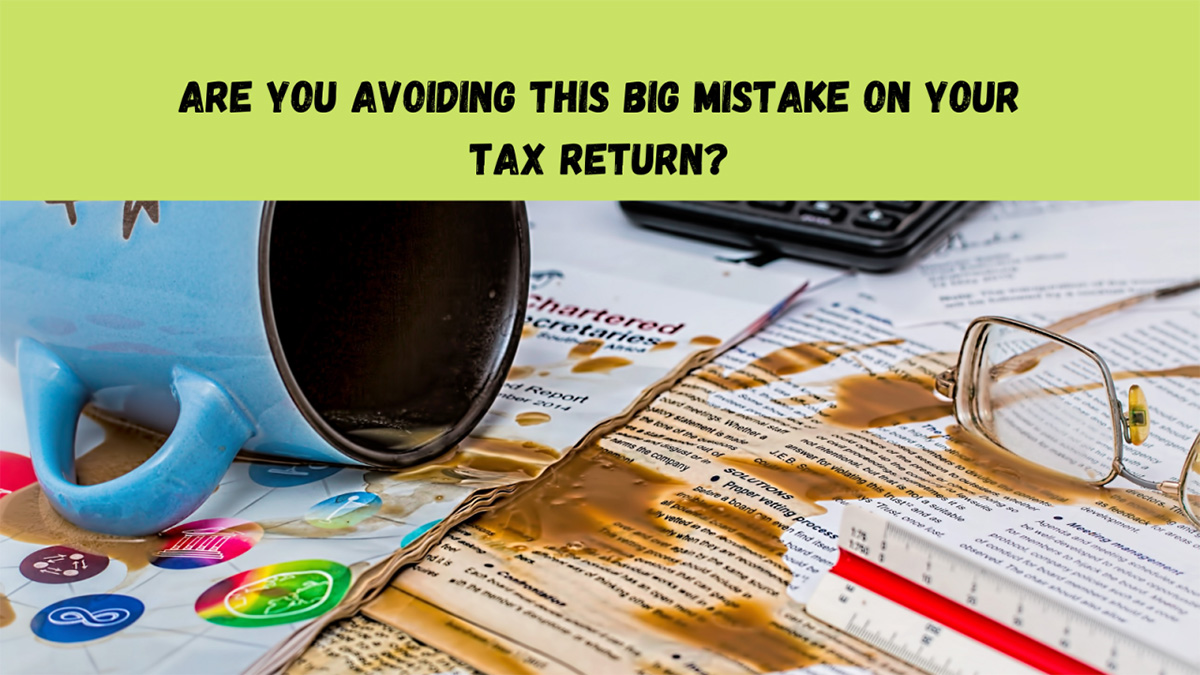Home>Finance>How To Report PPP Loan Forgiveness On A Tax Return


Finance
How To Report PPP Loan Forgiveness On A Tax Return
Published: October 28, 2023
Learn how to report PPP loan forgiveness on your tax return and ensure you maximize your financial benefits. Expert guidance and tips in managing your finance.
(Many of the links in this article redirect to a specific reviewed product. Your purchase of these products through affiliate links helps to generate commission for LiveWell, at no extra cost. Learn more)
Table of Contents
- Introduction
- Eligibility for PPP Loan Forgiveness
- Calculation of PPP Loan Forgiveness Amount
- Documentation Required for PPP Loan Forgiveness
- Reporting PPP Loan Forgiveness on Form 3508
- Reporting PPP Loan Forgiveness on Form 3508EZ
- Reporting PPP Loan Forgiveness on Form 3508S
- Reporting PPP Loan Forgiveness on a Tax Return
- Conclusion
Introduction
PPP Loan Forgiveness is a crucial aspect of the Paycheck Protection Program (PPP), aimed at providing financial relief to small businesses impacted by the COVID-19 pandemic. Under the PPP, eligible businesses were able to obtain loans to cover payroll, rent, and other expenses. The loan forgiveness component allows businesses to have a portion, or sometimes the entirety, of their PPP loan forgiven, essentially turning it into a grant.
Understanding how to report PPP loan forgiveness on a tax return is essential for businesses to ensure compliance and maximize the benefits of the program. It is important to note that the rules and requirements for reporting PPP loan forgiveness can vary depending on the loan amount and the type of form used to apply for forgiveness.
In this article, we will guide you through the process of reporting PPP loan forgiveness on a tax return. We will explain the eligibility criteria for PPP loan forgiveness, provide an overview of the calculation of the forgiveness amount, discuss the required documentation, and delve into the specific forms used for reporting. Let’s dive in!
Eligibility for PPP Loan Forgiveness
To be eligible for PPP loan forgiveness, businesses must meet certain criteria set forth by the Small Business Administration (SBA). Here are the key eligibility requirements:
- Use of Funds: The funds must be used for eligible expenses, namely payroll costs, rent, utilities, and mortgage interest. At least 60% of the loan amount must be spent on payroll costs, while the remaining 40% can be allocated to other eligible expenses.
- Timeframe: The forgiveness covers expenses incurred during the 24-week period (or the alternative 8-week period for earlier borrowers) starting from the date the business received the loan proceeds. This timeframe ensures that businesses have ample time to utilize the funds appropriately.
- Employee Retention: To qualify for full loan forgiveness, businesses must maintain their employee headcount and salary levels. If there are any reductions in workforce or wages, it may impact the amount of forgiveness received.
- Documentation: Businesses must maintain proper documentation to substantiate their expenses and demonstrate compliance with the PPP criteria. This includes providing payroll records, lease agreements, utility bills, and other supporting documents as required.
- Loan Forgiveness Application: To initiate the forgiveness process, businesses need to complete and submit the appropriate loan forgiveness application form, either Form 3508, Form 3508EZ, or Form 3508S, depending on their circumstances.
It is important to thoroughly review the PPP loan forgiveness guidelines provided by the SBA and consult with a financial professional or tax advisor to ensure compliance with the specific eligibility criteria.
Calculation of PPP Loan Forgiveness Amount
Calculating the PPP loan forgiveness amount can be a complex process, as it involves multiple factors and criteria. The key factors considered in the calculation include:
- Payroll Costs: The forgiveness amount is primarily based on payroll costs. This includes wages, salaries, tips, employee benefits (such as healthcare and retirement contributions), and certain state and local taxes. The maximum amount that can be considered for an individual employee is $100,000 annually.
- Full-Time Equivalent (FTE) Employees: The forgiveness amount may be reduced if there was a reduction in the average number of FTE employees during the covered period, compared to a reference period. This reduction factor is applied to adjust the eligible expenses.
- Non-Payroll Costs: Non-payroll costs, such as rent, utilities, and mortgage interest, can also be included in the forgiveness calculation. However, these costs cannot exceed 40% of the total eligible expenses.
- Safe Harbor Provisions: The forgiveness amount can be fully maintained if businesses can meet one of the safe harbor provisions. This includes rehiring employees or restoring salary levels by a specified deadline.
It is crucial for businesses to carefully track and document eligible expenses to ensure accurate calculation of the forgiveness amount. Utilizing payroll reports, invoices, lease agreements, and other supporting documents will help in preparing the forgiveness application accurately.
Keep in mind that the forgiveness amount cannot exceed the principal amount of the loan. Any remaining portion of the loan that is not forgiven will need to be repaid, with a 1% interest rate over a specific term.
It is recommended to consult with a financial professional or tax advisor to ensure the accurate calculation of the PPP loan forgiveness amount based on your business’s specific circumstances.
Documentation Required for PPP Loan Forgiveness
When applying for PPP loan forgiveness, businesses are required to provide documentation to support their eligible expenses and demonstrate compliance with the program requirements. Here are the key documents typically required for the forgiveness application:
- Payroll Records: This includes payroll tax filings, payroll registers or reports, and documentation verifying the amount of wages paid to employees during the covered period. It is important to include supporting documents for employee benefits and state/local taxes included in the payroll costs.
- Non-Payroll Expense Records: Documentation should be provided for non-payroll expenses, such as rent or lease agreements, utility bills, and mortgage interest statements. These documents should clearly show the expenses incurred during the covered period and demonstrate that they are eligible for forgiveness.
- FTE Employee Documentation: To determine any reduction in FTE employees, businesses should maintain documentation related to their workforce. This can include employee rosters, payroll records showing hours worked, and employment contracts.
- Proof of Safe Harbor Compliance: If businesses have met one of the safe harbor provisions, such as restoring FTE employee levels or salary levels, documentation supporting this compliance should be included in the forgiveness application.
- Bank Statements: It is advisable to include bank statements or other financial records that verify the use of loan proceeds for eligible expenses and provide a clear audit trail of funds disbursed during the covered period.
- Other Supporting Documentation: Depending on the specific circumstances of the business and their use of funds, additional documentation may be required. This may include tax filings, invoices, receipts, and other records that can validate the expenses claimed for forgiveness.
It is essential to organize and maintain these documents in a systematic manner to simplify the forgiveness application process. Clear and detailed documentation will not only facilitate the calculation of the forgiveness amount but also provide a solid foundation for any potential audits or reviews conducted by the SBA.
Consider consulting with a financial professional or tax advisor to ensure that you have gathered all the necessary documentation and are prepared to submit a comprehensive and well-supported forgiveness application.
Reporting PPP Loan Forgiveness on Form 3508
Form 3508 is the standard application form used for reporting PPP loan forgiveness for businesses that do not qualify for the simplified forms. Here is an overview of the reporting process:
- Section 1: Business Information: Provide basic information about your business, including the legal name, address, and Tax Identification Number (TIN).
- Section 2: Loan Information: Fill in the loan number, disbursement amount, and the date the loan was received.
- Section 3: PPP Loan Forgiveness Amount Calculation: This section requires you to calculate the forgiveness amount based on eligible expenses and reductions. It includes detailed instructions on how to calculate payroll costs, non-payroll costs, and the reduction in FTE employees.
- Section 4: PPP Schedule A: In this section, you need to provide detailed information on eligible payroll and non-payroll costs, including employee names, average hours worked, and compensation levels.
- Section 5: PPP Schedule A Worksheet: Complete the worksheet to calculate the forgiveness amount, incorporating any reductions based on reductions in FTE employees or salary levels.
- Section 6: PPP Schedule A Certification: Read and sign the certification statements confirming the accuracy of the information provided.
- Section 7: Borrower Demographic Information: Provide demographic information about the business, such as the number of employees, primary business activity, and NAICS code.
- Section 8: Borrower Additional Information: This section allows borrowers to provide any additional information or explanations regarding the application.
Once you have completed Form 3508, submit it, along with the required supporting documentation, to your PPP lender. They will review your application and make a determination on the forgiveness amount.
It is recommended to review the instructions provided with Form 3508 and consult with a financial professional or tax advisor to ensure the accurate completion of the form and maximize your eligible forgiveness amount.
Reporting PPP Loan Forgiveness on Form 3508EZ
Form 3508EZ is a simplified version of the PPP loan forgiveness application for borrowers who meet specific criteria. The eligibility requirements for using Form 3508EZ are as follows:
- You are a self-employed individual, independent contractor, or sole proprietor with no employees.
- You did not reduce the salaries or wages of your employees by more than 25%, and you did not reduce the number of FTE employees during the covered period.
- You did not reduce the salaries or wages of your employees by more than 25% and you were unable to operate at the same level of business activity due to compliance with COVID-19 guidelines issued by certain government agencies.
If you meet the above criteria, you can report your PPP loan forgiveness using Form 3508EZ, which has a simpler and streamlined process compared to the standard Form 3508. Here is an overview of the reporting process:
- Section 1: Business Information: Provide basic business information, including the legal name, address, and Tax Identification Number (TIN).
- Section 2: PPP Loan Forgiveness Calculation: Complete this section to calculate the forgiveness amount based on eligible expenses. Provide the loan amount, payroll costs, non-payroll costs, any salary or wage reductions, and the number of FTE employees.
- Section 3: PPP Schedule A Certification: Read and sign the certification statements confirming the accuracy of the information provided.
- Section 4: Borrower Demographic Information: Provide demographic information about the business, such as the number of employees, primary business activity, and NAICS code.
- Section 5: Borrower Additional Information: Use this section to provide any additional information or explanations regarding your application.
Once you have completed Form 3508EZ, submit it, along with the required supporting documentation, to your PPP lender. They will review your application and make a determination on the forgiveness amount.
It is important to review the instructions provided with Form 3508EZ and consult with a financial professional or tax advisor to ensure the accurate completion of the form and to maximize your eligible forgiveness amount based on your specific circumstances.
Reporting PPP Loan Forgiveness on Form 3508S
Form 3508S is the simplest version of the PPP loan forgiveness application. It is designed for borrowers who received PPP loans of $150,000 or less. If you meet this criteria, you can use Form 3508S to report your PPP loan forgiveness. Here’s an overview of the reporting process:
- Section 1: Business Information: Provide basic business details, such as the legal name, address, and Tax Identification Number (TIN).
- Section 2: PPP Loan Forgiveness Amount: Enter the loan amount, disbursement date, and payroll costs incurred during the covered period.
- Section 3: PPP Schedule A Certification: Read and sign the certification statements to confirm the accuracy of the information provided.
- Section 4: Borrower Demographic Information: Provide demographic information about the business, including the number of employees, the primary business activity, and the NAICS code.
- Section 5: Borrower Additional Information: Use this section to provide any additional information or explanations regarding the application.
Form 3508S is a streamlined version that requires less documentation compared to the standard and EZ forms. Borrowers using Form 3508S are exempt from reductions in loan forgiveness amounts based on reductions in FTE employees or salary/wage reductions.
Once you have completed Form 3508S, submit it, along with any required supporting documentation, to your PPP lender. They will review your application and make a determination on the forgiveness amount.
It is important to review the instructions provided with Form 3508S and consult with a financial professional or tax advisor to ensure the accurate completion of the form and to maximize your eligible forgiveness amount based on your specific circumstances.
Reporting PPP Loan Forgiveness on a Tax Return
When it comes to reporting PPP loan forgiveness on a tax return, the treatment can vary depending on your business structure and the specific tax regulations in your jurisdiction. Here are some general guidelines:
- C-Corporations: If your business is structured as a C-corporation, any forgiven portion of the PPP loan is not considered taxable income. Therefore, you will not need to report it on your tax return as income.
- S-Corporations, Partnerships, and LLCs: Pass-through entities, such as S-corporations, partnerships, and limited liability companies (LLCs), generally follow the same treatment. The forgiven amount of the PPP loan is not taxable income on the entity level, and it will flow through to the individual owners’ tax returns accordingly. Consult with a tax professional to determine the proper reporting for your specific entity type.
- Sole Proprietorships and Self-Employed Individuals: For sole proprietors and self-employed individuals, the forgiven amount of the PPP loan is not treated as taxable income. However, eligible expenses that were used for PPP loan forgiveness cannot be deducted as business expenses on your tax return. This is because the expenses were essentially covered by the forgivable loan.
It is crucial to consult with a tax professional to ensure the accurate reporting of any PPP loan forgiveness on your tax return. They will be able to provide guidance based on your business structure and the specific tax regulations applicable to your situation.
When preparing your tax return, you may be required to provide documentation and supporting records related to the PPP loan and the forgiveness amount. Keep these documents well-organized and easily accessible for reference during the tax filing process.
Remember, tax laws can change, and there may be specific guidelines issued by the relevant tax authorities. Stay informed about any updates or modifications to tax regulations pertaining to PPP loan forgiveness reporting to ensure compliance with the current guidelines.
Conclusion
PPP loan forgiveness is a vital component of the Paycheck Protection Program that provides financial relief to small businesses impacted by the COVID-19 pandemic. Reporting PPP loan forgiveness accurately is crucial to ensure compliance with program requirements and to maximize the benefits of the program.
In this article, we have covered the key aspects of reporting PPP loan forgiveness, including eligibility criteria, calculation of forgiveness amounts, documentation requirements, and reporting on various forms such as Form 3508, Form 3508EZ, and Form 3508S. We have also touched upon the reporting of PPP loan forgiveness on tax returns for different business structures.
It is essential to stay updated on the latest guidelines and regulations issued by the Small Business Administration (SBA) and relevant tax authorities to ensure accurate reporting. As each business’s circumstances may vary, it is advisable to consult with a financial professional or tax advisor who can provide tailored advice and guidance based on your specific situation.
Remember to keep detailed records of your eligible expenses and maintain proper documentation to support your PPP loan forgiveness application and tax reporting. By following the necessary steps and meeting the requirements, you can maximize the benefits of PPP loan forgiveness, providing much-needed relief to your business and helping you navigate through these challenging times.
As always, it is advisable to consult with a qualified professional to ensure compliance with all regulations and obtain personalized guidance based on your unique circumstances. With the right information and support, you can successfully navigate the process of reporting PPP loan forgiveness and maximize the benefits of the program for your business.














